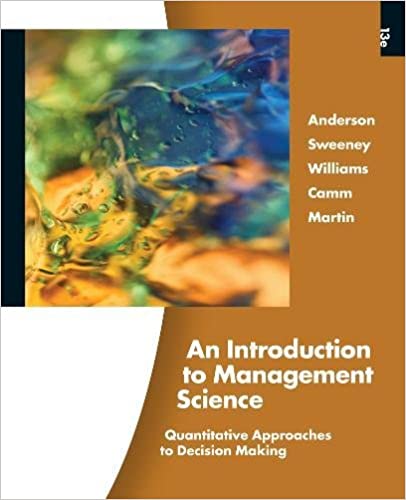
An Introduction to Management Science 13th Edition by David Anderson,Dennis Sweeney ,Thomas Williams ,Jeffrey Camm, Kipp Martin
Edition 13ISBN: 978-1439043271
An Introduction to Management Science 13th Edition by David Anderson,Dennis Sweeney ,Thomas Williams ,Jeffrey Camm, Kipp Martin
Edition 13ISBN: 978-1439043271 Exercise 17
Recall the Innis Investments problem (Chapter 2, Problem 39). Letting 
leads to the information:
The computer solution is shown in Figure 3.16
a. What is the optimal solution, and what is the minimum total risk?
b. Specify the objective coefficient ranges.
c. How much the annual income will be earned by the portfolio.
d. What is the rate of return for the portfolio?
e. What is the dual value for the funds available constraint?
f. What is the marginal rate of return on extra funds added to the portfolio?
FIGURE 3.16 THE SOLUTION FOR THE INNIS INVESTMENTS PROBLEM

leads to the information:

The computer solution is shown in Figure 3.16
a. What is the optimal solution, and what is the minimum total risk?
b. Specify the objective coefficient ranges.
c. How much the annual income will be earned by the portfolio.
d. What is the rate of return for the portfolio?
e. What is the dual value for the funds available constraint?
f. What is the marginal rate of return on extra funds added to the portfolio?
FIGURE 3.16 THE SOLUTION FOR THE INNIS INVESTMENTS PROBLEM

Explanation
Linear Programming
Linear programming i...
An Introduction to Management Science 13th Edition by David Anderson,Dennis Sweeney ,Thomas Williams ,Jeffrey Camm, Kipp Martin
Why don’t you like this exercise?
Other Minimum 8 character and maximum 255 character
Character 255


